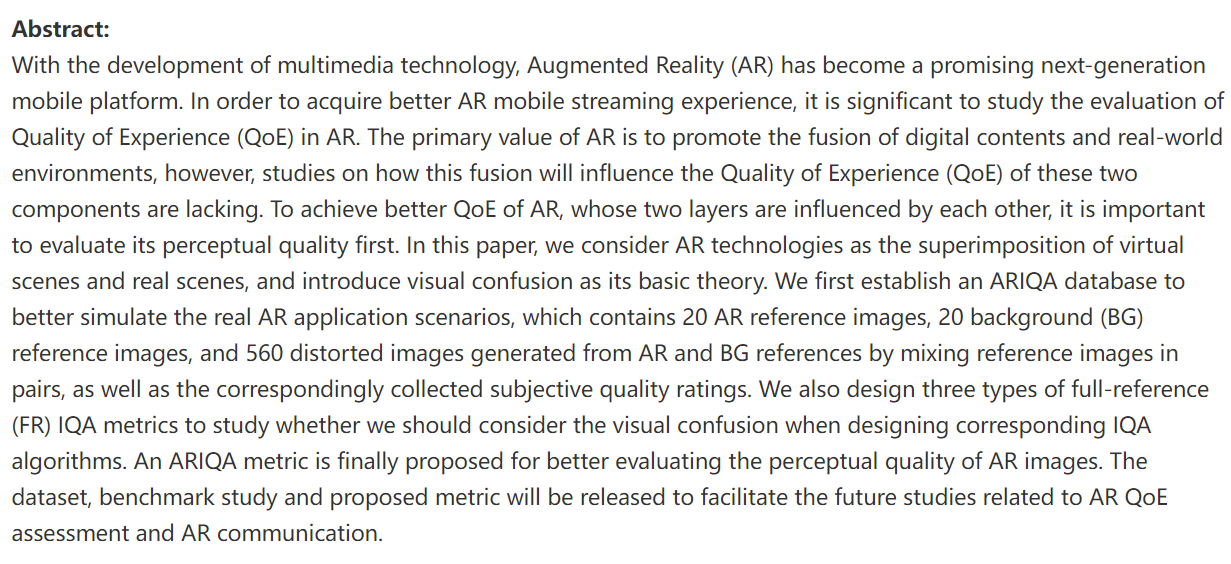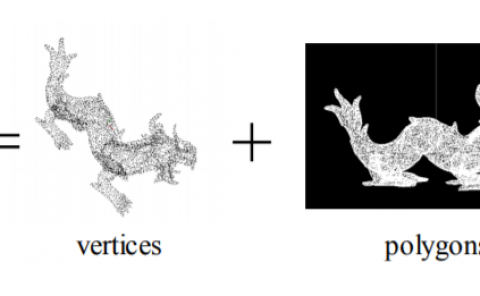Augmented Reality Image Quality Assessment Based on Visual Confusion Theory
PubDate: July 2022
Teams: Shanghai Jiao Tong University;Beijing Institute of Technology
Writers: Huiyu Duan; Lantu Guo; Wei Sun; Xiongkuo Min; Li Chen; Guangtao Zhai
PDF: Augmented Reality Image Quality Assessment Based on Visual Confusion Theory

Abstract
With the development of multimedia technology, Augmented Reality (AR) has become a promising next-generation mobile platform. In order to acquire better AR mobile streaming experience, it is significant to study the evaluation of Quality of Experience (QoE) in AR. The primary value of AR is to promote the fusion of digital contents and real-world environments, however, studies on how this fusion will influence the Quality of Experience (QoE) of these two components are lacking. To achieve better QoE of AR, whose two layers are influenced by each other, it is important to evaluate its perceptual quality first. In this paper, we consider AR technologies as the superimposition of virtual scenes and real scenes, and introduce visual confusion as its basic theory. We first establish an ARIQA database to better simulate the real AR application scenarios, which contains 20 AR reference images, 20 background (BG) reference images, and 560 distorted images generated from AR and BG references by mixing reference images in pairs, as well as the correspondingly collected subjective quality ratings. We also design three types of full-reference (FR) IQA metrics to study whether we should consider the visual confusion when designing corresponding IQA algorithms. An ARIQA metric is finally proposed for better evaluating the perceptual quality of AR images. The dataset, benchmark study and proposed metric will be released to facilitate the future studies related to AR QoE assessment and AR communication.


